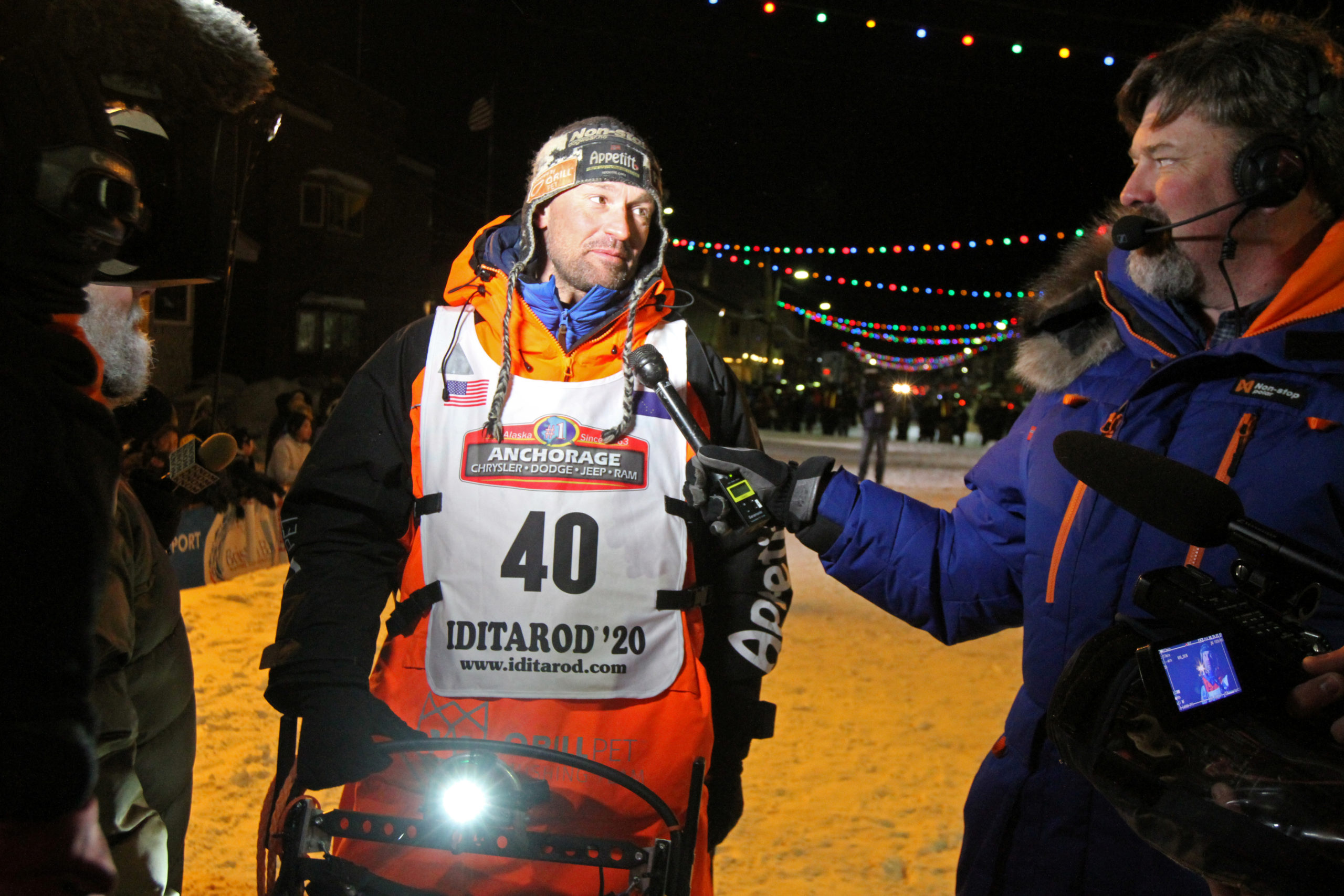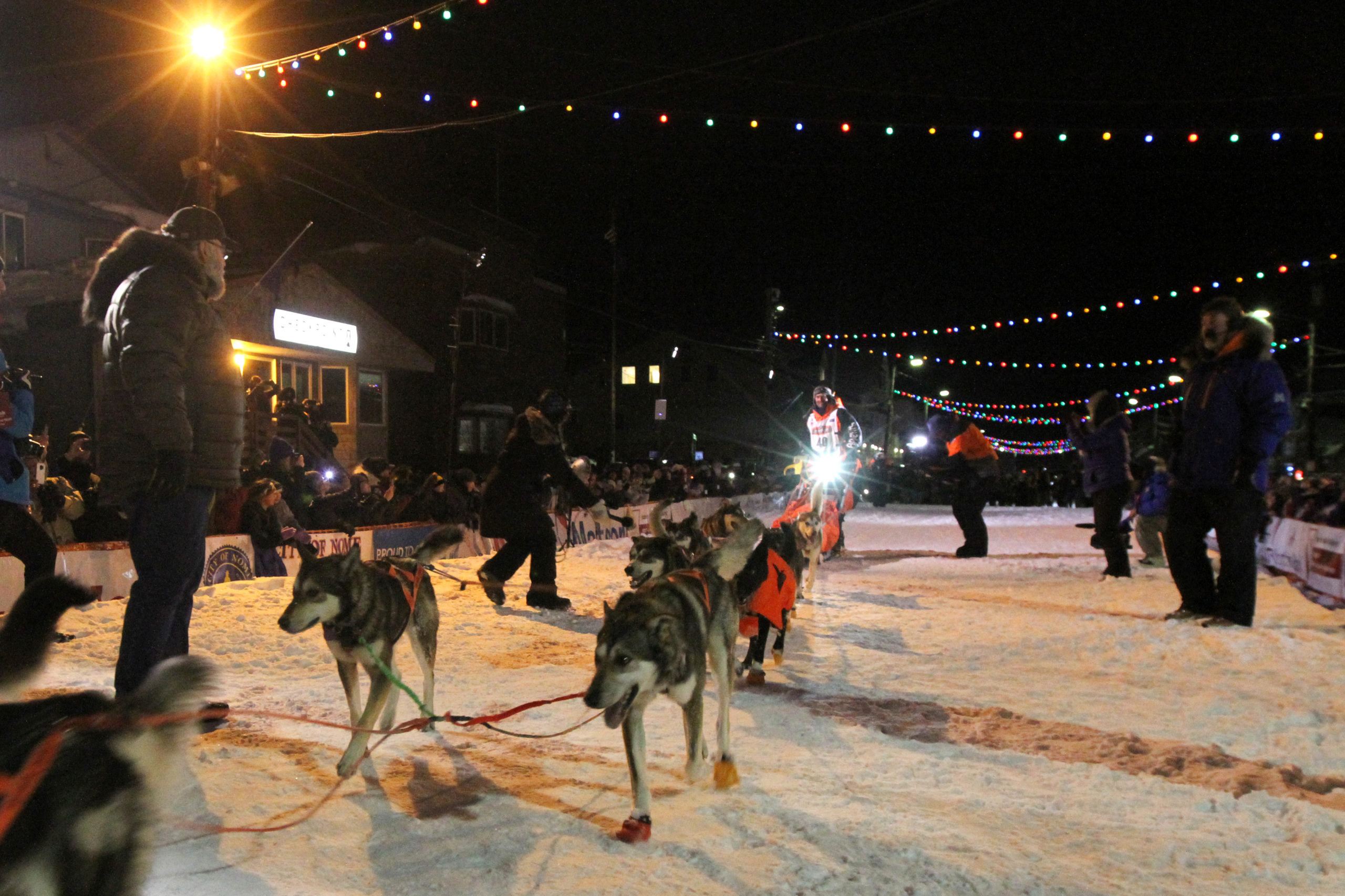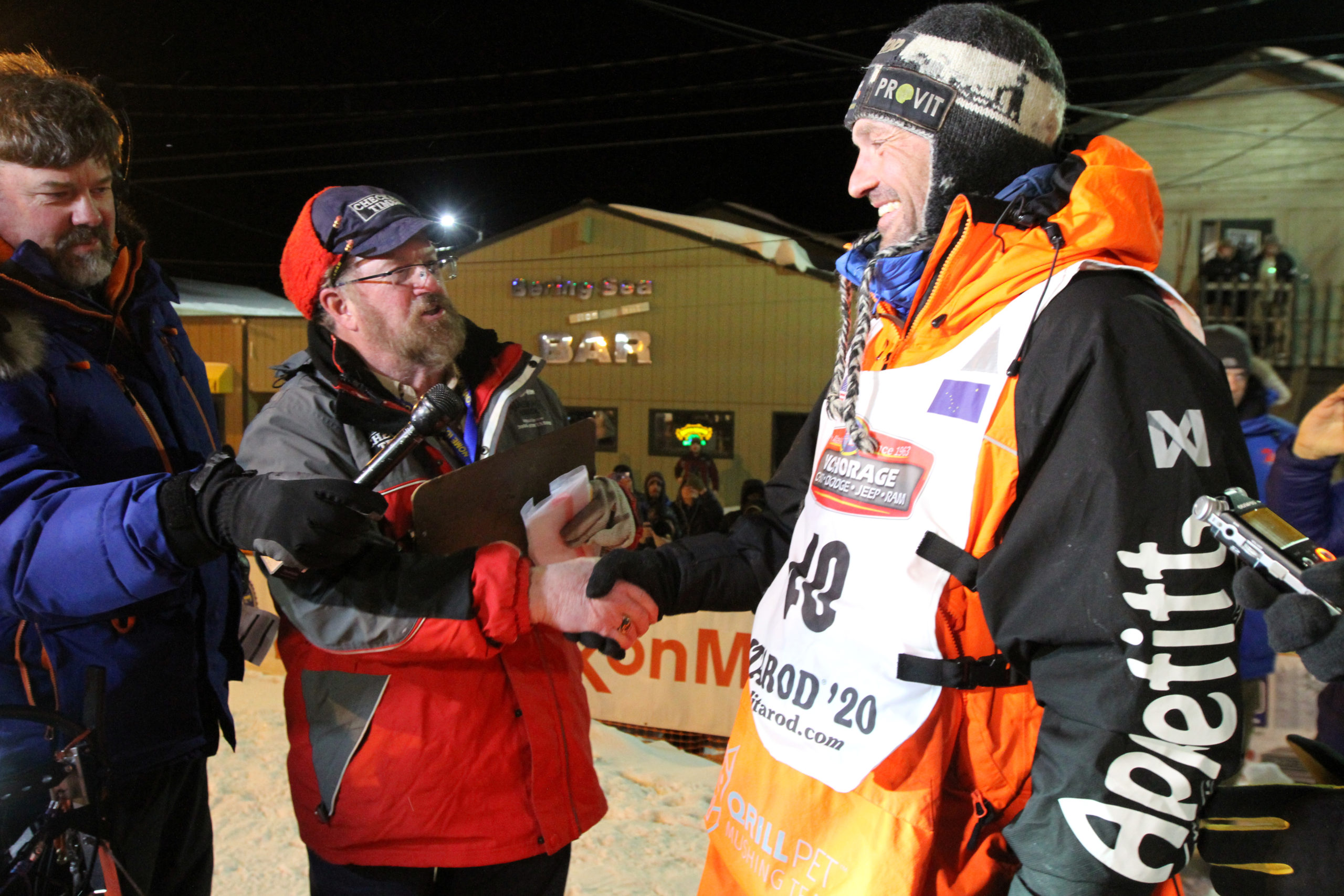Norway’s Waerner wins an Iditarod marked by coronavirus precautions
The history of the race and the Alaska region it traverses is deeply connected to deadly disease outbreaks.

Norway’s Thomas Waerner has won the 48th Iditarod Trail Sled Dog Race, passing under the burled arch finish line in Nome, Alaska early Wednesday morning.
Waerner, who also won last year’s Finnsmarkøppet, crossed the finish line with a time nine days, 10 hours, 37 minutes and 47 seconds. He is the third Norwegian to win the Iditarod, after Robert Sørlie and Joar Leifseth Ulsom.
The race, which commemorates a life-saving sled dog run to deliver urgently needed medicine during a disease outbreak a century ago, was marked by unprecedented changes in the midst of another outbreak.
As the coronavirus known as COVID-19 spreads around the globe, safety measures were enacted along the race’s route and at its Nome finish, a region marked by a history of lethal disease outbreaks.
When Iditarod mushers reached the Yukon River village of Nulato, about 580 miles into the 1,000-mile race, they were kept separated from the residents of the Athabascan community. The checkpoint was isolated from the public; only designated race officials were available to greet the mushers.
The Inupiat village of Unlalakeet, the first race checkpoint on the Bering Sea coast and normally a hub of Iditarod festivities, took similar measures. In Shaktoolik, the next stop up the trail, the usual checkpoint site was ditched for a makeshift checkpoint outside the village, an abandoned structure that volunteers beefed up with heat, power, sleeping space and an outhouse.
[How the Arctic’s limited infrastructure could make coronavirus deadlier in the region]
As mushers reach Nome, they will get a much quieter-than-normal welcome at the race’s finish line. The city canceled Iditarod-related festivities and asked out-of-town Iditarod fans to stay away. The Iditarod mushers’ awards banquet has been postponed indefinitely, and the race organizers have asked fans to keep their distance.
“The Iditarod fully appreciates and is humbled by the passion and social energy of the Iditarod nation; however, we are asking you to not make any nonessential travel to the Nome finish, in particular, those who are traveling from outside of Alaska,” said a statement from the race committee.
The lack of opportunity for the public to meet mushers and Iditarod visitors at checkpoints is a “bummer,” said Laureli Ivanoff of Unalakleet.
“Just the limited interaction is kind of sad. We like visiting with people who are in from the outside,” said Ivanoff, who works for the Norton Sound Economic Development Corp.
But it is necessary, she said, given the rapid spread of the disease, the infection’s prolonged incubation period and the scarcity of medical services and infrastructure in that part of rural Alaska. “People could be walking in our community and not know that they’re infected with COVID-19,” she said.
Because of the virus, another sled dog race, the post-Iditarod Kobuk 440, billed as the “toughest race above the Arctic Circle,” was called off.
For the Iditarod, race managers’ and communities’ response has special meaning. The race commemorates a 1925 rescue mission to Nome that sent life-saving diphtheria medicine to Nome.
“The irony is not lost on me,” Ivanoff said.
As of March 17, Alaska had six known cases of COVID-19. The first patient was a cargo plane pilot who became ill during a stopover in Anchorage. After that, three people tested positive in Fairbanks, one in Ketchikan and an additional person in Anchorage. All were known to have traveled outside of Alaska, state officials said.
The virus and the illness it causes may be new, but for Alaska Natives — especially those along the Iditarod Trail — the story is old. If Native villagers are cautious about the possibility of outsiders bringing in diseases, history tells them they have reason to be.
Since the Russian-America days of the 18th century, waves of deadly epidemics hit all parts of Alaska. Indigenous residents without immunity fell victim to introduced European diseases like smallpox, measles and influenza.
Two decades after Alaska was transferred to the United States, the situation was grave, the top government official in Alaska said.
“In my opinion, if some effective measures are not taken to ameliorate their condition the complete extinction of the native inhabitants of the Aleutians and some parts of the main-land will be a question of comparatively short time only,” Alfred Swineford, the appointed governor of what was then the District of Alaska, wrote in his fiscal 1887 report to the Secretary of the Interior.
The epidemics continued.
In 1900, a potent combination of measles and influenza known as the “Great Sickness” killed vast numbers of Indigenous people in western Alaska; some villages lost a quarter or half of their residents. But non-Indigenous Alaskans suffered only lightly, with mild symptoms, according to researchers.
Alaska’s Bering Strait region, through which today’s Iditarod race travels, was particularly hard hit by the influenza pandemic that started in 1918, also known as the Spanish flu. Some Seward Peninsula villages were wiped out entirely, and others were nearly wiped out.
Scientists examining preserved genetic material were able to trace its route into the Bering Strait region. It was spread with the November 2018 arrival in Nome of a steamship, the SS Victoria, that had traveled from Seattle.
A few years later, the region was gripped by the deadly diphtheria epidemic that spurred the now-legendary Serum Run.
Then, as now, some of the villages barred outside visitors, said four-time Iditarod champion Martin Buser, who has studied the history of the region.
“They had guards in front of the villages who didn’t let people in,” Buser said at the race’s Anchorage ceremonial start on March 7. There are still remnants of a cabin used as a guard post for that self-imposed quarantine, he said.
Sled dogs were the heroes of the 1925 diphtheria epidemic. And dogs may be heroes again in the rapidly warming Arctic, which is faces threats of zoonotic illnesses — those that can be transferred from animals to people — spreading from the south.
Sled dogs have proved to be good sentinels of environmental contaminants that travel vast distances from the south into the North’s food web, said and international team of scientists working with the One Health program supported by the Arctic Council.
Those dogs can help reveal other hazards from diseases and climate change, the scientists said in a chapter of a book published in December. “We therefore recommend that ecosystem health assessments in the Arctic including that of Northerners start to include analyses of sled dogs combined with modeling tools,” the scientists said in their segment of a book titled “Pets as Sentinels, Forecasters and Promoters of Human Health.”


